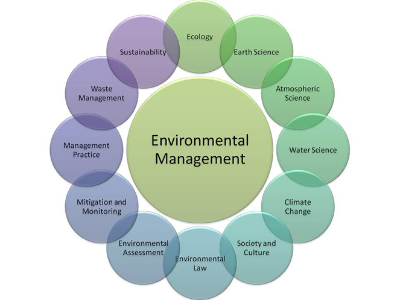Environmental Hazards
The recurrent pattern of environmental hazards is predictable. However, based on what is now known, it might not be able to forecast others. Catastrophes can occur suddenly and clearly. Sometimes a system experiences stress and undergoes nearly undetectable alterations until a threshold is crossed, at which point abrupt and potentially serious consequences may occur. Only a limited amount of prediction, threat identification, and suitable response are now possible. Instead of “survival of the fittest,” certain species and humans might prevail by pure luck if life were threatened but there was not enough time for adaptation. Certain risks can be predicted, enabling early warning, or backup plans can be created.
Therefore, environmental managers must not neglect to evaluate the threat posed by rare but catastrophic events. The challenge is to persuade individuals that it is worthwhile to spend money on surveillance to detect hazards that may not have manifested within living or historical memory. In addition, individuals must be convinced that it is worthwhile to invest in reducing vulnerability and enhancing the likelihood of recovery from unforeseen disasters.
Volcanic eruptions and meteor strikes in the past have inflicted havoc on larger magnitudes, but their effects on the climate have not been widely accepted. In the course of human history, no volcanic incident has been sufficiently catastrophic to cause governments to prepare for global consequences. It is possible that catastrophic events do not occur at random.
At certain alignments in the trajectories of the Earth and other planets, asteroid impacts, variations in the Earth’s solar radiation receptions, gamma-ray bursts, increased cosmic radiation, geomagnetic weakening and reversals, and possibly vulcanicity and seismic activity may be more probable. It has been hypothesized that ice ages and mass extinctions occurred when the solar system passed through dust and gas clouds on a vast plane every 26 to 33 million years, causing ice ages and mass extinctions.
Climate change is now recognised as a hazard by policymakers and a portion of the global population. Although the causes remain debatable, most scientists now acknowledge that there have been both warm and frigid global “greenhouse” and “ice-house” conditions.
In the past few thousand years, humans have enjoyed relatively stable post-glacial conditions, but scientists warn that this cannot be expected to continue, and that abrupt, severe changes are possible due to our ever-increasing pollution. Pollution is distorting natural climate change, making it more difficult to make accurate forecasts.
In recent years, drought and monsoon rainfall patterns have fluctuated frequently enough to affect humans. Numerous of these changes have been associated with ocean–atmospheric processes and pressures, also known as El Nino or La Nina factors. There are currently concerns that global warming could have devastating effects on humanity.
It is evident and imminent that the environment poses grave dangers. However, planners, administrators, and citizens all lack sufficient awareness. There is a common perception that technology has diminished vulnerability. Nevertheless, contemporary communities are arguably more vulnerable than ever before.
Environmental Disaster and its Limits
It is a law of nature that if a resource necessary for survival, such as water, space, nutrients, etc., is in limited supply, population growth will be constrained. The growth pattern of a population reaching a limit may be gradual or sudden, limited, or catastrophic. It is necessary to exercise caution when dealing with estimates of the population the Earth could support, as they are in part speculative. Many have argued that the limits have already been exceeded, but that there is still time to convert ‘overshoot’ to a reduced sustainable population if the appropriate development is pursued swiftly.
Environmental Crisis
Since the 1990s, concerns that the Earth is facing a “crisis” or is already in crisis have grown. How some disaster forecasters have diverse estimations or conceptions (misconceptions). Recognized that a crisis is a turning point and the final opportunity to avert, mitigate, or adapt. Typically, the cause is attributed to one or a combination of people’s excessive exploitation of nature, overpopulation, improper application of technology, and poor development ethics. Whatever the case may be. What is perceived as a crisis is susceptible to shifting beliefs, fashion, technological prowess, etc.
Some types of perceived crisis may be classified, such as renewable resource depletion and degradation global environmental change, biodiversity loss, ever increasing pollution, increasing hunger and poverty, and rapid unplanned urban growth. The other perceived crises are of nuclear or biological warfare and debt burden of states or societies at macro level as well as.
As a result, the word crisis has become overused, which has an effect on how people respond to warnings. The public’s circumstances and perceptions vary, so not everyone agrees on what constitutes a crisis. Some may view a crisis as routine, while others may view it as an opportunity. Interestingly, the term is also susceptible to emotional journalistic use. Some, primarily on the political left, argue that the concept of a crisis may be a liberal ploy to deflect attention away from addressing actual issues such as social injustice and poverty. Other proponents of the crisis believe that environmental issues are primarily caused by flawed notions of development and modernization.
Population densities in a few developing nations are so high that environmental degradation and genocide have resulted. At the end of the twentieth century, there were apprehensions of an impending oil crisis, with the danger point likely to be reached in twenty years if exploration companies do not discover sufficient new reserves. There are unquestionably severe local or regional environmental and socioeconomic issues, but there is currently no global crisis. Although many would concur that the current rates of population growth and consumption trends will result in one within the next generation, there are some who disagree.
A short-term, crisis-focused approach to development planning is not advisable. On occasion, it may be necessary to instill a dread of crisis to achieve results. Frequently, environmental management issues necessitate the involvement of a smaller group to prompt action and a follow-up of thorough research to determine what is occurring and what is required. Inadequate observation may result in the identification of a large-scale crisis as a mistaken response to a fragmented, localized problem. Important research provides the environmental manager with the means for objective and thorough monitoring, thereby preventing such mistakes.
Surviving Harsh Environments
Long-utilized strategies for surviving in harsh environments have frequently failed in recent years, frequently resulting in environmental degradation. The causes are diverse and include, to name a few, population growth, structural adjustments, social changes, the spread of commercial agriculture, the adoption of new commodities, and restrictions on the mobility of people or livestock.
It is also beneficial to assess past crises to determine which threats materialized and to determine how society responded. History rarely repeats itself precisely, so environmental administrators must proceed with caution when applying lessons from the past. It is also beneficial to examine developments in comparable current environments, but this does not guarantee identical outcomes.







